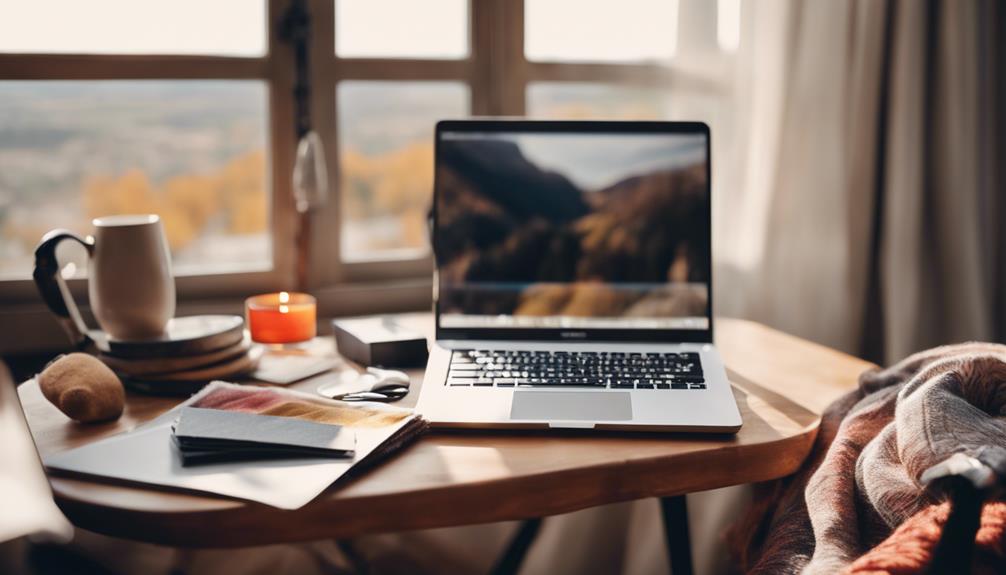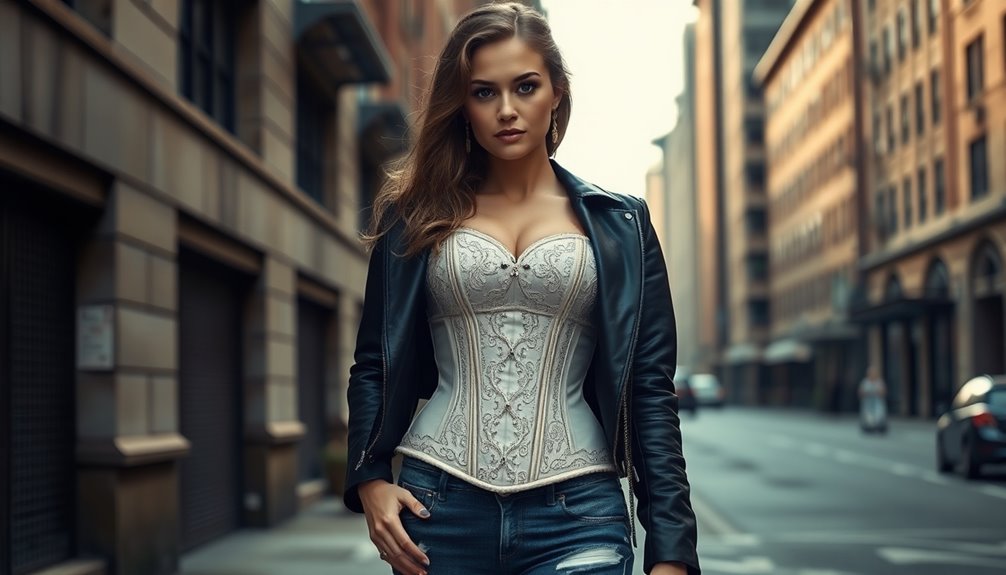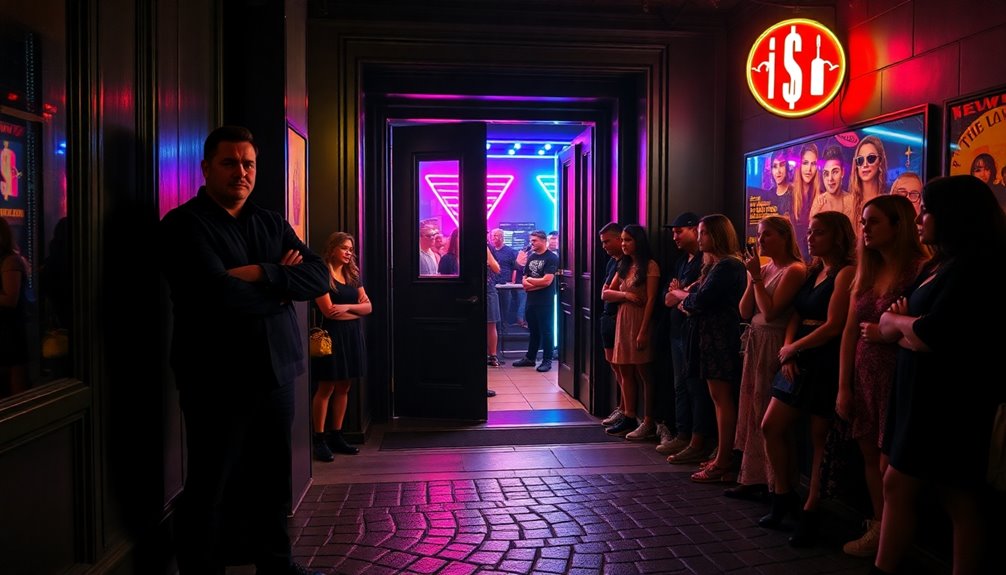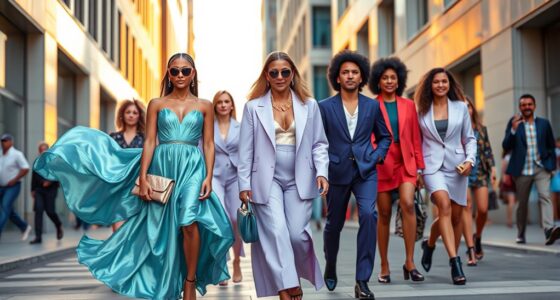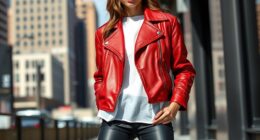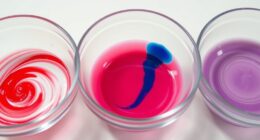Remote fashion jobs allow you to combine your passion for fashion with the freedom to work from anywhere. Whether your expertise lies in digital marketing, graphic design, or e-commerce, there is a growing demand for your skills. You can showcase your creativity in fashion while promoting sustainability through eco-friendly practices. From timeless classics to trendy streetwear, you can create styles that resonate with today’s trends. Additionally, you have the flexibility to personalize your workspace just like you would your wardrobe. If you are interested in learning more about remote opportunities in the fashion industry, there is plenty to discover!
Key Takeaways
- Remote fashion jobs offer flexibility, allowing you to blend your passion for style with a convenient work environment.
- Skills in digital marketing, merchandising, and customer service are in high demand for remote positions in the fashion industry.
- Brands like Abercrombie & Fitch Co. actively hire for remote roles, providing opportunities to work from anywhere.
- Emphasizing versatile and functional fashion is crucial for remote work, ensuring comfort while maintaining a stylish appearance.
Origin and historical background of the fashion trend/style
You might be surprised to see how fashion has transformed through the decades, especially with the rise of remote work.
Influential fashion icons have shaped styles that not only reflect personal expression but also adapt to new work environments.
Understanding these shifts can help you appreciate the historical context behind today's remote fashion jobs.
Fashion's Transformation Through Decades
Fashion has continuously evolved through the decades, reflecting societal changes and cultural movements that shape its trends and styles.
In the 1920s, flapper dresses marked a pivotal moment in women's liberation, symbolizing a break from traditional norms.
As you move into the 1960s, the introduction of ready-to-wear clothing revolutionized fashion trends, making stylish attire more accessible and giving birth to youth culture and street fashion.
The 1980s brought bold styles and power dressing, showcasing a desire for self-expression and confidence.
Then, the 1990s challenged the status quo with minimalist styles and the grunge aesthetic, emphasizing individuality and a departure from conventional fashion norms.
Fast forward to the 2000s, when technology and the internet transformed fashion marketing and sales, paving the way for e-commerce and direct-to-consumer models.
Today, you're witnessing a significant shift towards sustainability and ethical fashion practices, driven by your demand for environmentally friendly and socially responsible clothing.
This journey through decades highlights how fashion trends not only reflect but also influence the world around you, making it an ever-evolving tapestry of creativity and expression.
Fashion Icons of the Era
The evolution of fashion trends is closely tied to influential figures who've shaped styles and made lasting impacts on the industry. Icons like Coco Chanel and Christian Dior transformed women's fashion in the early 20th century, emphasizing comfort and elegance, which laid the groundwork for modern aesthetics.
As you explore fashion jobs, understanding these influences becomes essential.
In the 1960s, Twiggy and Yves Saint Laurent popularized the 'Mod' look, showcasing bold patterns and youthful silhouettes that mirrored the cultural shifts of their time.
Fast forward to the 1980s and 1990s, Keith Haring and Pharrell Williams led the rise of streetwear, merging casual clothing with high fashion and solidifying its role in contemporary style.
Today, modern influencers like Rihanna and Kim Kardashian are redefining fashion through social media, demonstrating the powerful intersection of celebrity culture and digital marketing.
Additionally, the sustainability movement has brought contemporary icons like Stella McCartney to the forefront, advocating for eco-friendly practices and ethical production methods.
As you navigate the world of fashion jobs, remember these icons and their contributions, as they continue to inspire new trends and drive the industry forward.
Key Characteristics

When you think about remote fashion jobs, consider the key characteristics that define modern styles.
Signature patterns and textures, sustainable fabrics and hues, and timeless fashion staples play essential roles in how brands connect with consumers.
These elements not only reflect current trends but also cater to a growing demand for ethical and enduring fashion choices.
Signature Patterns and Textures
Signature patterns and textures often embody cultural influences, featuring elements like florals, stripes, and geometrics that resonate with specific demographics.
When you explore fashion, you'll notice how these signature patterns can tell a story, connecting wearers to their heritage or lifestyle. Textures such as lace, denim, and knits play an essential role as well, adding depth and visual interest to garments. They enhance the overall aesthetic and feel of a fashion piece, making it more appealing to your target audience.
Bold and unique patterns can become a brand's hallmark, setting them apart in a competitive market. Think about how certain designers are instantly recognizable due to their distinctive signature patterns.
Seasonal trends also influence the popularity of various textures and patterns, with materials like velvet and metallics often making waves during fall and winter collections.
Sustainable Fabrics and Hues
Sustainable fabrics showcase eco-friendly materials like organic cotton and hemp, which greatly reduce water usage and chemical inputs during production.
When you choose sustainable fabrics, you're not just making a fashion statement; you're also supporting a healthier planet. Many of these fabrics incorporate recycled materials, such as recycled polyester created from plastic bottles, promoting a circular economy and cutting down on waste.
You'll find that natural dyes derived from plants, fruits, and minerals are increasingly popular in sustainable fabrics. These dyes minimize the environmental impact associated with synthetic options. Plus, the production of these fabrics often adheres to fair trade practices, ensuring that laborers receive fair wages and work in safe conditions.
Innovations in sustainable textiles continue to evolve, with exciting developments like biodegradable materials and waterless dyeing techniques emerging to further reduce environmental footprints.
By opting for sustainable fabrics, you're embracing a choice that aligns style with responsibility. Whether you're working from home or on the go, you can feel good about your fashion choices when they prioritize sustainability.
Timeless Fashion Staples
Incorporating timeless fashion staples into your wardrobe not only enhances your style but also guarantees versatility for any occasion.
A classic white button-down shirt is a prime example; you can dress it up with a blazer for work or pair it with jeans for a casual outing. The little black dress (LBD) is another essential piece, effortlessly shifting from day to night with the right accessories.
Speaking of jeans, a well-fitted pair, especially in a dark wash, serves as a foundational element for both casual and semi-formal looks. You can easily mix and match it with various tops and footwear.
Neutral-colored blazers add structure and sophistication, effortlessly elevating your outfits to make them suitable for professional settings.
Modern Interpretation
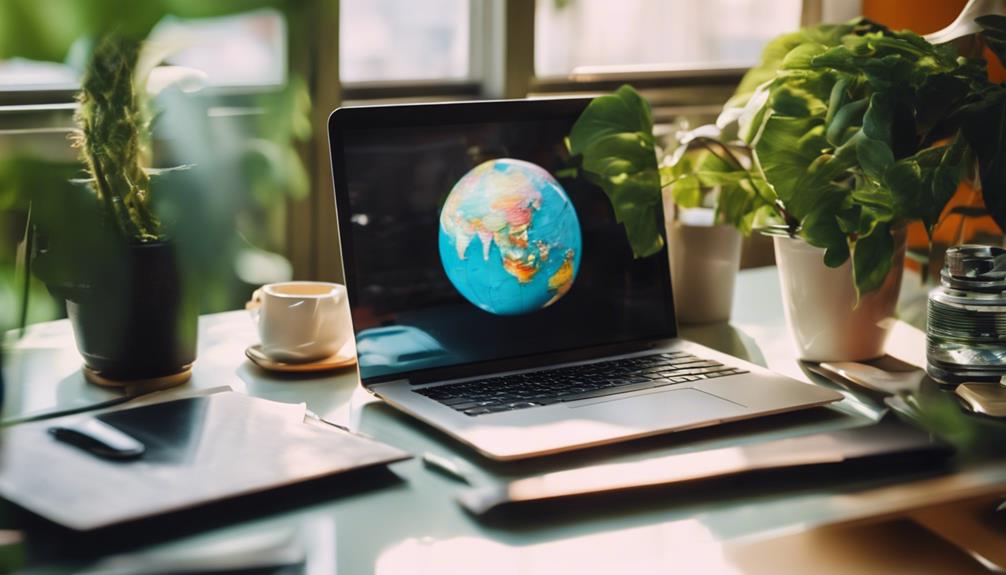
Streetwear's taken the spotlight, and it's reshaping how you view fashion in a digital world.
With influencers and labels driving trends, your understanding of style is influenced by what you see on social media.
As you explore remote fashion jobs, consider how these modern interpretations are changing the landscape of the industry.
Streetwear's Rise in Popularity
The explosion of streetwear into mainstream fashion reflects a cultural shift that embraces comfort, creativity, and individuality. This trend has gained momentum, driven by a projected market value of $185 billion by 2027. As you look for remote fashion options, streetwear stands out due to its casual style, aligning perfectly with the growing demand for comfortable work-from-home attire.
Collaborations between high-end fashion brands and streetwear labels, like Louis Vuitton and Off-White, have elevated the status of streetwear, making it a desirable choice for fashion enthusiasts everywhere. Social media platforms such as Instagram and TikTok play a pivotal role in promoting streetwear trends, allowing you to discover and engage with brands that resonate with your personal style from virtually anywhere.
Moreover, many streetwear brands are embracing sustainability, reflecting a shift towards ethical fashion. By incorporating recycled materials and eco-friendly production methods, they're appealing to conscious consumers who want to make responsible choices.
Streetwear Influencers and Labels
Streetwear influencers and labels are reshaping the fashion landscape, using social media to connect with audiences and showcase their unique styles in real-time.
You'll find that these influencers often collaborate with established brands to create limited-edition drops, which markedly boosts their visibility and market influence.
With the rise of remote work, streetwear labels can now hire diverse talent from various locations, enriching their creative processes and fostering innovation.
Digital marketing and social media management roles are essential for these brands, as they rely on platforms like Instagram and TikTok to engage with their audience and promote their unique styles.
As a result, you can see how the demand for skilled professionals in these areas is growing tremendously.
The streetwear market is on an upward trajectory, projected to grow at a CAGR of 9.7% from 2021 to 2028, driven by the increasing consumer interest in casual and urban fashion.
If you're considering a career in this dynamic field, embracing remote opportunities with streetwear influencers and labels can lead to exciting prospects while allowing you to work from anywhere.
Fashion-Forward Social Media Stars
With the rise of remote opportunities, fashion-forward social media stars are now at the forefront of shaping brand narratives and connecting with consumers through innovative content. The demand for social media managers in the fashion industry has surged, making it easier for you to secure a remote position that enhances a brand's online presence.
In these roles, you'll need to be proficient in digital marketing and possess strong communication skills to effectively engage audiences on platforms like Instagram and TikTok. Companies are on the lookout for candidates with a keen eye for fashion trends and the ability to create compelling content that resonates with target consumers.
Working remotely in fashion social media can offer competitive salaries, ranging from $42,000 to $90,000 annually, depending on your experience and the brand's size. Plus, successful candidates often enjoy flexible work arrangements, allowing you to balance your creativity with your lifestyle.
This means you can drive brand awareness and sales through digital channels while maintaining the freedom to work from anywhere. Embrace the trend—your next fashion-forward adventure awaits!
Styling Tips
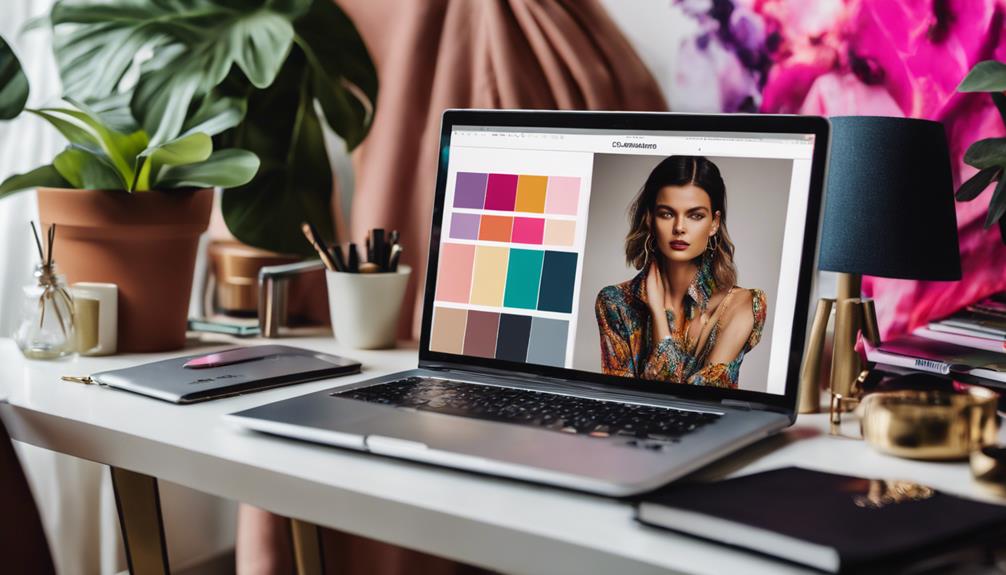
When it comes to styling for remote work, you'll want to focus on versatile layering pieces that can adapt to your day.
Seasonal color combinations and smart color coordination techniques can elevate your look while boosting your mood.
Let's explore how these elements can transform your virtual wardrobe.
Versatile Layering Pieces
Layering versatile pieces like cardigans and light jackets can transform your outfit, allowing you to adapt seamlessly to changing temperatures and occasions. These staples are essential in any fashion-forward wardrobe. Opt for lightweight knits and breathable cotton to guarantee comfort without adding bulk to your look.
When choosing layering pieces, go for neutral colors and classic patterns. They create a timeless aesthetic that complements a wide range of outfits, making it easy for you to mix and match.
Don't forget about accessories! Adding scarves or statement belts can enhance your layered looks, introducing texture and visual interest while allowing you to express your personal style.
The trend of functional fashion emphasizes the need for layering pieces that offer both style and practicality. As you navigate your remote work environment, these adaptable clothing options will keep you looking polished while ensuring you're comfortable, whether you're on a video call or heading out for errands.
Embrace versatile layering pieces in your wardrobe, and you'll find it easy to maintain a chic appearance, no matter where work takes you.
Seasonal Color Combinations
Incorporating seasonal color combinations into your wardrobe can elevate your style and reflect the mood of each season.
For spring, think pastel shades like lavender and mint green that evoke freshness and renewal. These colors not only brighten your outfits but also lift your spirits.
As summer rolls in, vibrant hues such as coral and turquoise can energize your looks, keeping you in tune with the lively atmosphere.
When fall arrives, embrace warm tones like burgundy and mustard, creating a cozy and inviting vibe. These seasonal color combinations enhance your overall aesthetic while aligning with current trends.
For winter, consider deep jewel tones or crisp neutrals that add sophistication to your ensembles.
Don't forget about the power of complementary colors. Pairing navy blue with coral can create striking contrasts that grab attention and make your outfits pop.
The Pantone Color Institute's seasonal color trend report can guide you in selecting the right shades, ensuring your wardrobe remains stylish and relevant.
Color Coordination Techniques
Mastering color coordination techniques can transform your outfits, ensuring you always look stylish and put-together.
Understanding color theory is essential; for instance, complementary colors—those opposite each other on the color wheel—create striking contrasts that grab attention. You can also mix neutral colors like black, white, gray, and beige with bolder hues for a balanced look.
One effective approach is the 60-30-10 rule: make 60% of your outfit a dominant color, 30% a secondary color, and 10% an accent color. This method helps you maintain visual harmony while allowing for creativity. If you prefer a softer aesthetic, consider using analogous colors—those next to each other on the color wheel. These combinations yield a cohesive and pleasing outfit.
Don't forget about seasonal color palettes! Warm earth tones shine in fall, while vibrant colors are perfect for summer fun.
As a fashion retailer, you can leverage these color coordination techniques to enhance your styling skills, ensuring your wardrobe is versatile and ready for any occasion. By applying these tips, you'll always step out in confidence and flair!
Shopping Guide
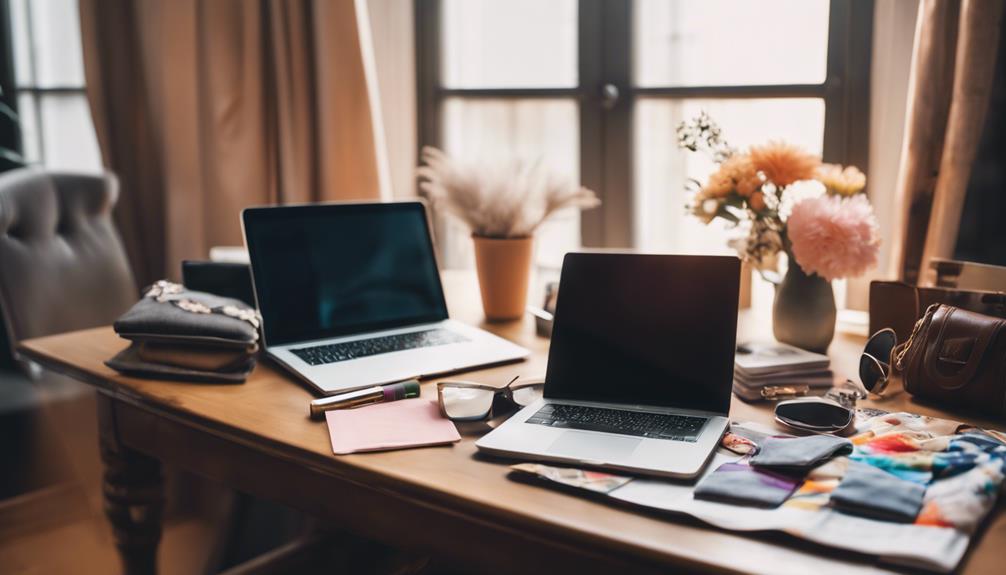
Exploring remote fashion jobs can open up exciting opportunities for you to blend your passion for style with flexible work arrangements. As e-commerce continues to thrive, there's a growing demand for individuals skilled in digital marketing, merchandising, and customer service.
To make the most of your shopping experience, keep an eye on brands that are actively hiring for remote positions, such as Abercrombie & Fitch Co. and M.PATMOS.
When shopping online, look for retailers that offer a seamless e-commerce experience, including user-friendly websites and responsive customer support. Check for brands that highlight their commitment to inclusivity and diversity, as they often reflect a more modern approach to fashion.
Don't forget to explore freelance opportunities as well—roles for graphic designers and content creators can enrich your portfolio while allowing you to maintain a flexible schedule. Look for platforms that connect freelancers with fashion brands, ensuring you can work on diverse projects that match your style.
Upcycling Old Fashion Items
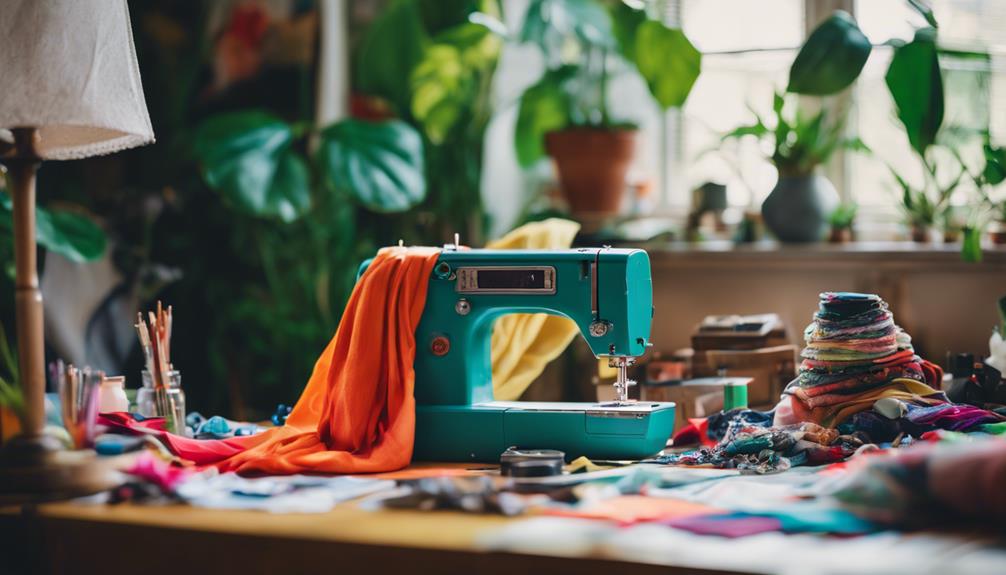
Upcycling old fashion items lets you repurpose vintage clothing and explore DIY fashion alterations.
You can turn that forgotten dress into a trendy top or transform old jeans into a stylish bag.
Not only does this spark your creativity, but it also promotes a more sustainable approach to fashion.
Repurposing Vintage Clothing
Transforming vintage clothing into stylish, modern pieces not only sparks creativity but also champions sustainability in fashion.
By upcycling old garments, you're helping reduce waste in the industry while creating unique fashion items that stand out. The global upcycled fashion market is projected to reach $418.2 billion by 2028, showing a growing demand for eco-friendly products.
You can explore various techniques for repurposing vintage clothing, such as dyeing, patchwork, and altering silhouettes.
These methods allow you to breathe new life into old pieces, giving them a fresh, contemporary look. Plus, many fashion designers are now incorporating upcycled items into their collections, appealing to eco-conscious consumers who value sustainability.
DIY Fashion Alteration Ideas
Revamping old fashion items can be a fun and rewarding way to express your creativity while contributing to a more sustainable wardrobe.
DIY fashion alteration ideas let you transform pieces that might otherwise sit unused in your closet. For instance, take an oversized shirt and turn it into a stylish crop top, or convert a long dress into a chic skirt. These simple alterations not only breathe new life into your clothing but also help you develop valuable skills in sewing and design.
You can further personalize your creations by adding embellishments like patches, embroidery, or fabric paint. These trendy additions can turn worn-out garments into unique fashion statements that reflect your style. Plus, engaging in upcycling projects is a cost-effective way to reduce clothing waste while enhancing your wardrobe.
As more consumers seek to minimize their environmental impact, sharing your alterations can boost your customer service skills in the fashion world. Whether you sell your upcycled items online or showcase them on social media, you'll inspire others to join this growing trend.
Embrace the art of DIY fashion alterations, and watch your wardrobe transform into a sustainable collection that's truly one-of-a-kind!
Cultural Impact
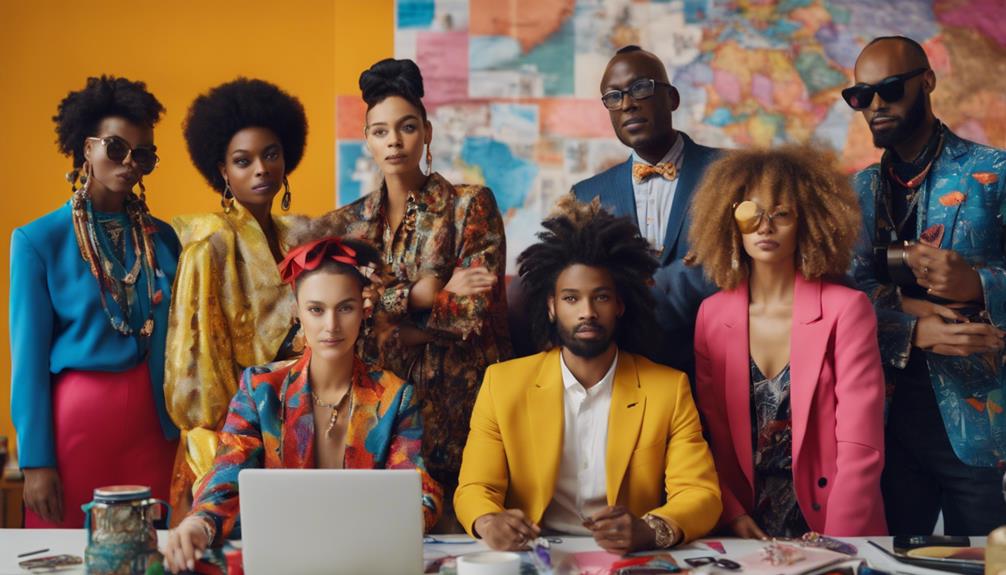
As you explore the cultural impact of remote fashion jobs, you'll notice how influential fashion films shape public perception and trends.
You'll also see how fashion activism and advocacy gain momentum, as diverse voices amplify important social issues.
This shift highlights the need for brands to engage meaningfully with cultural narratives and responsibilities.
Influential Fashion Film Moments
Fashion films have a powerful ability to shape trends and cultural perceptions, often leaving a lasting impact on style choices and consumer behavior.
Think about influential fashion film moments like Nicole Kidman's 'Chanel No. 5' commercial, which combined high fashion with cinematic storytelling. This moment not only showcased luxury but also utilized effective media strategies that drew consumers in.
In 'The Devil Wears Prada,' you see the inner workings of the fashion industry, and this film sparked a renewed interest in designer brands, influencing how people perceive luxury fashion.
Similarly, 'Clueless' made plaid skirts and knee-high socks a must-have for youth, proving how films can dictate trends that resonate with the younger generation.
Documentaries like 'The September Issue' highlight the critical role of fashion journalism, helping to shape public understanding of major fashion trends.
Films such as 'A Single Man' and 'The Great Gatsby' emphasize the importance of costume design, showing how exceptional fashion enhances storytelling and character development.
These influential fashion film moments not only entertain but also play a significant role in shaping the cultural landscape of fashion.
Fashion Activism and Advocacy
Increasingly, the fashion industry is embracing activism and advocacy, directly addressing critical issues like sustainability and social justice. As you explore remote fashion jobs, you'll find opportunities that allow you to engage in fashion activism, championing ethical practices, inclusivity, and labor rights. This shift reflects a growing consumer demand for brands that align with their values, pushing companies to be accountable for their environmental and social impact.
With remote work, activists can collaborate globally, expanding their influence and driving change in the fashion landscape. Social media platforms have become powerful tools for brands to incorporate activism into their marketing strategies, enabling them to raise awareness and engage consumers in social justice movements.
Organizations like Fashion Revolution have gained traction, promoting transparency and ethical sourcing, which reshapes consumer expectations and industry standards. As you consider a career in this space, know that you're part of a movement that aims for positive change.
Fashion activism isn't just a trend; it's an essential response to the pressing issues facing our world. Embrace the chance to make a difference while working from anywhere in style!
Frequently Asked Questions
How to Get a Remote Fashion Job?
To get a remote fashion job, sharpen your skills in digital marketing and design software, build a strong portfolio, network actively, and research companies offering flexible work policies. Keep applying and stay persistent in your search.
Can Fashion Designers Work Remotely?
Yes, fashion designers can work remotely. Many companies now offer flexible positions that let you collaborate digitally, using design software to create collections and communicate with teams, ensuring creativity thrives from anywhere in the world.
How Do I Break Into the Fashion Industry With No Experience?
To break into the fashion industry with no experience, build a strong online portfolio, network through social media, volunteer at events, and pursue relevant online courses to enhance your skills and visibility.
What Is Up2staff?
Up2staff's a platform that connects you with remote job opportunities in fashion. It offers over 1,000 listings catering to various roles, helping you find the perfect fit while promoting flexibility and work-life balance.
Can I Work in Fashion Remotely and Still Stay on Top of the Latest Trends?
Working in fashion remotely is entirely possible while staying on top of the latest trends. By staying connected to industry news, following fashion influencers and designers on social media, and utilizing online resources to shop latest fashion trends, you can easily keep up with the ever-changing fashion landscape from anywhere in the world.
How Can I Incorporate Winter Fashion into My Remote Work Wardrobe?
As the temperatures drop, it’s possible to incorporate cozy and chic winter fashion styles into your remote work wardrobe. Try layering a chunky knit sweater over a button-down shirt, paired with tailored trousers or stylish leggings. Accessorize with a statement scarf or a beanie for a fashionable yet comfortable look.
Conclusion
In today's world, remote fashion jobs let you express your style from anywhere.
Whether you're upcycling old pieces or exploring new trends, you can make a statement that reflects who you are.
Embrace your creativity, mix and match, and don't be afraid to stand out.
Remember, fashion is about self-expression, and with the right mindset, you can work in style no matter where you are.
So go ahead, redefine your wardrobe and make it uniquely yours!
